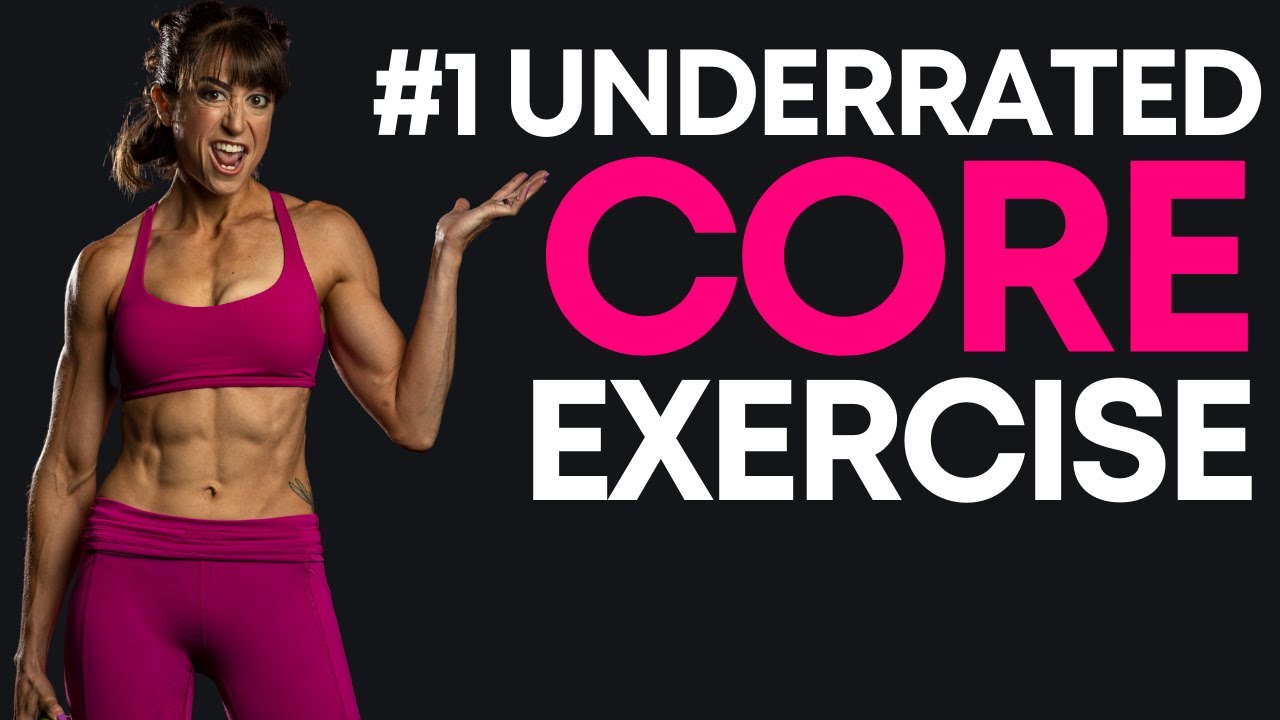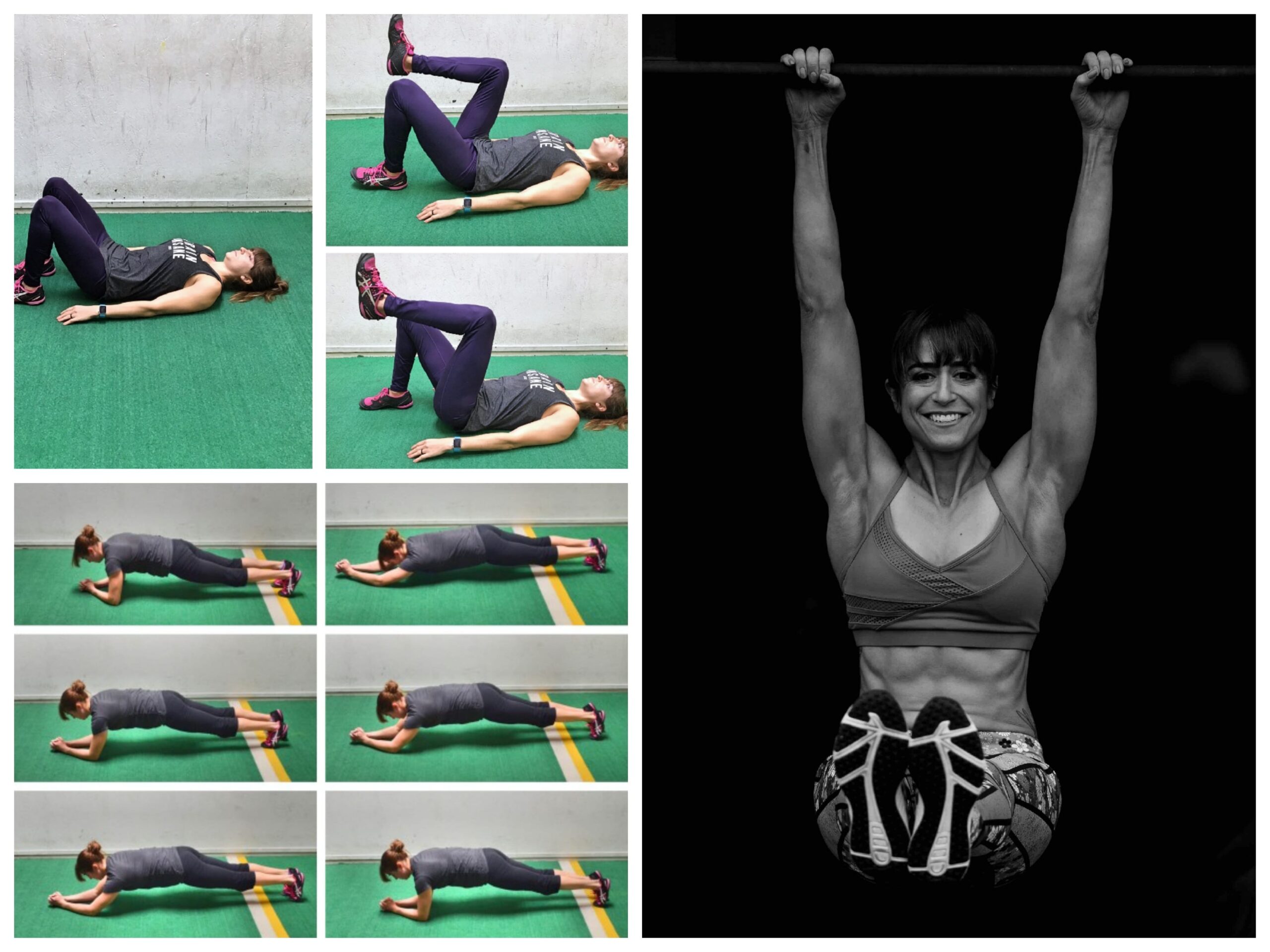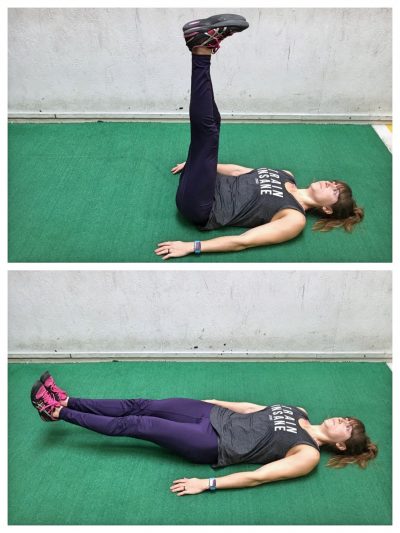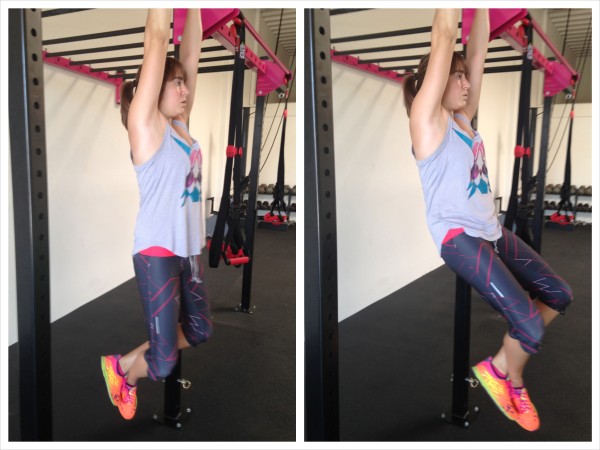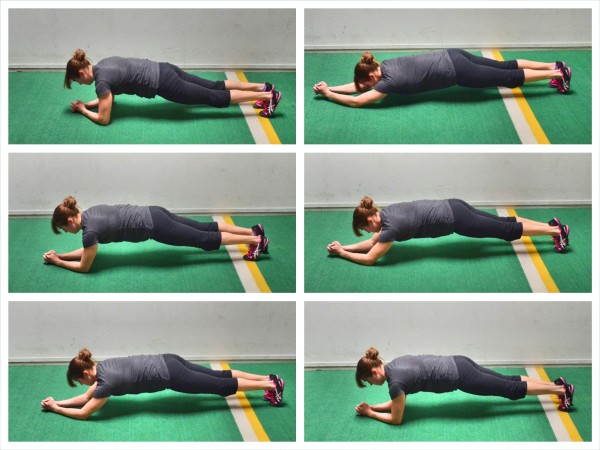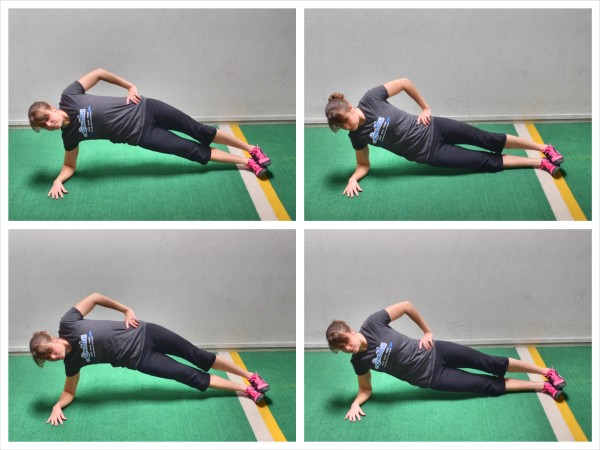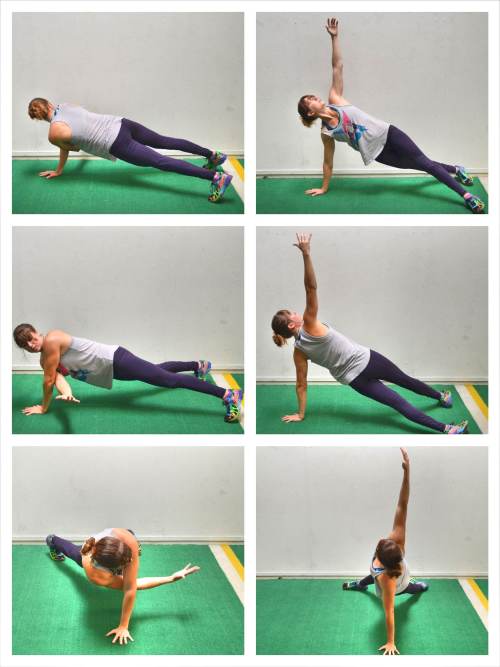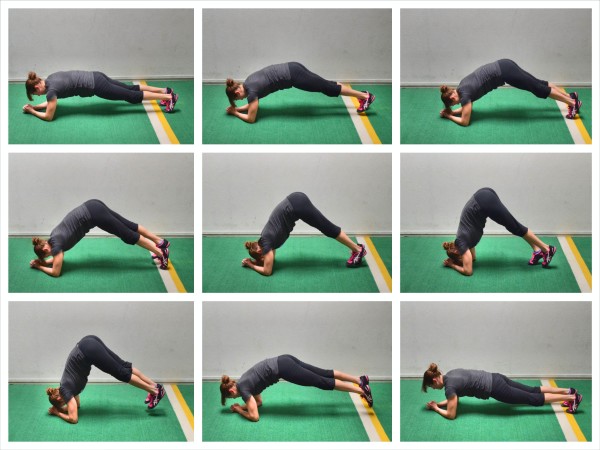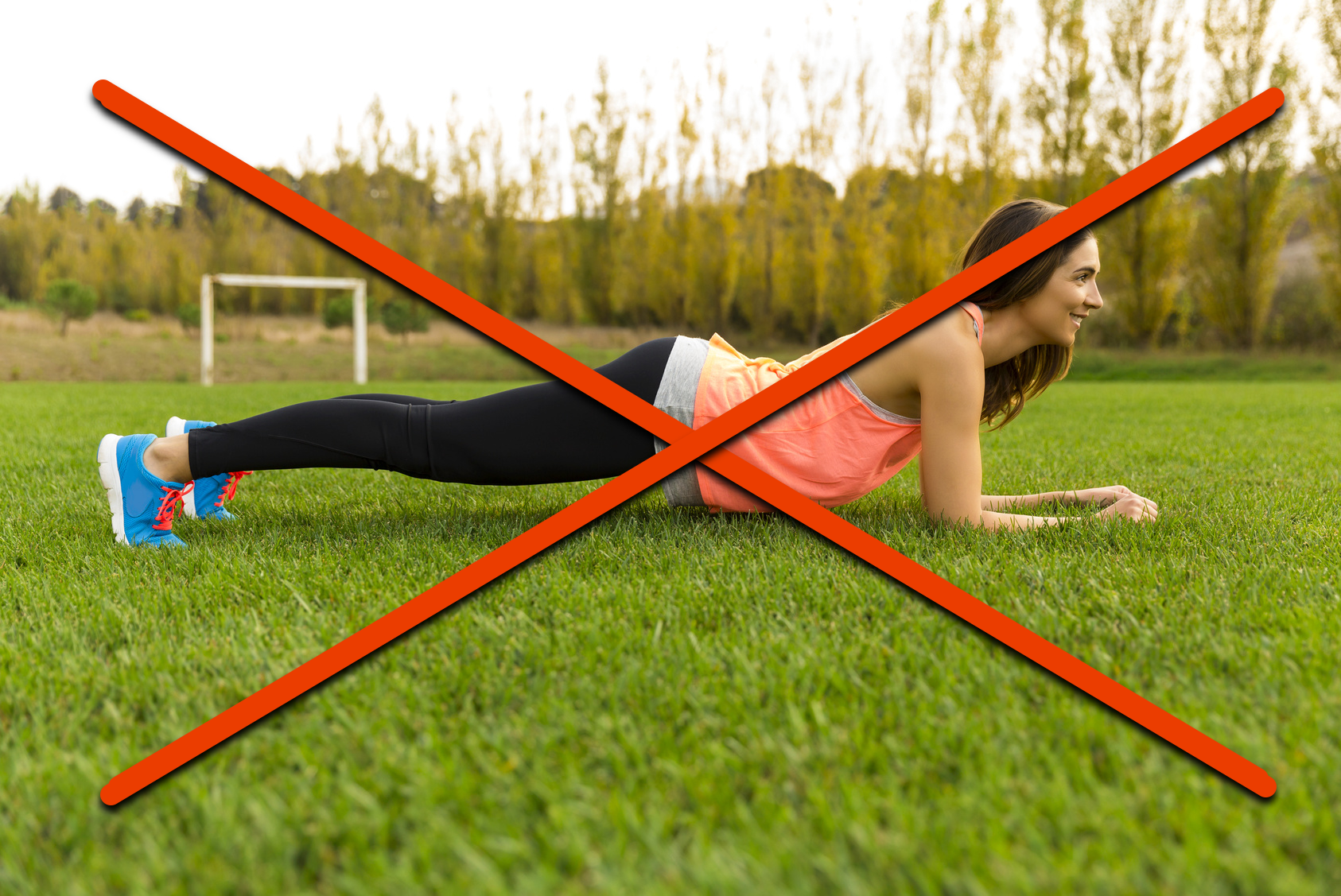
10 DUMBBELL CORE Exercises You’re Not Doing
Looking to spice up your core training routine? Then these dumbbell core moves will help! Whether you want to target your abs, obliques or glutes, there is a move here to help. And these exercises will help you improve both your rotational and anti-rotational core strength. Plus they can be done from a variety of different postures, whether you want to do something standing or get down on the ground.
Pick a few of these moves to start implementing into your programming based on your needs and goals!
1: Turkish Hinge:
This core move is based off of one step in the full Turkish Get Up and is a great way to improve your hip and shoulder stability. It is an amazing way to target those obliques and especially that glute medius.
When you do this exercise, you want to focus on that lateral hinge, really pushing your butt to the side. This allows you to load and use that glute to hinge and come back up to half kneeling. It also helps you keep your weight centered so you could technically hinge over without having to put any weight on that hand on the ground until you’re ready.
If you simply just lean over, you’ll lose your balance and really struggle with stabilizing that raised shoulder. So focus on loading that glute as you hinge over then using that glute and your oblique to pull you back up!
Make sure as you set your hand down to the side as well that you aren’t reaching out wide but setting it closer to your body.
If you can’t kneel on the ground, you can do a similar move called the Windmill standing. Just make sure to start with a light weight for both to focus on stabilizing that raised weight!
2: Plank Pull Throughs:
This anti-rotational core move is a must-do plank variation. It is a great way to really work everything from your shoulders to your knees down not only your frontside but also your backside!
As you do this move, you want to focus on keeping your core still and your hips level. You want to pull the weight fully across without rotating. Don’t rotate just to pull it further. And make sure to brace those abs and glutes to fight that rotation! It’s key you also make sure your hands are under your shoulders as you set up. This will help you avoid overloading your neck and shoulders to better engage your back to support your shoulders and fight that rotation as well.
Move slowly. While it is tempting to rush if you feel unbalanced, DON’T!
To modify this move, you can start with a reach over pulling a weight. You can also place your hands on an incline and pull the weight on the bench or stair.
–> VIDEO OF ALL 10 MOVES BELOW <–
3: Glute Bridge with Cross Body Chops:
Our lats and glutes must work together efficiently if we want a proper transfer of force and power through our core. This keeps not only our shoulders and hips healthy but also promotes better pelvic stability.
That’s why this move is an amazing one to include in your routine!
Holding the dumbbell in both hands you want to reach overhead to one side then chop the dumbbell across your body down outside your other hip. And you want to maintain that solid bridge hold as you perform the chop. Make sure as you hold the bridge, your glutes are powering the hold. Use that posterior pelvic tilt to avoid overloading your lower back. And focus on driving your knees toward your toes so you aren’t just pushing yourself backward as you hold, which can lead to your hamstrings taking over for your glutes.
As you do the chop, across to your hip, really feel your lat pulling the weight down from overhead. Move slowly with this move!
To progress this exercise, you could even do an 80/20 or single leg variation!
4: Rotational Lunge:
Don’t want to get down on the ground to work your core? Want an amazing rotational move you can do to target those abs, obliques and glutes? Then try the Rotational Lunge
This move is a great way to work on that rotational core strength and learn to not only accelerate and power rotation, but decelerate and control that rotation.
When you do this move, you want to treat the lunge as more of a hip hinge than focusing on sinking that back knee toward the ground. You really want to load that front glute so you can drive off that foot to power the rotation and come back up to standing before lunging back on the other side.
Even focus on that exhale as you drive out of the lunge to help you brace those abs and protect your back. Make sure to focus on loading that glute so you don’t twist too far and load your lower back. Make sure too that you’re not caving or rounding over to try to reach back further, but really only hinging at the hips.
To modify, you can adjust the amount of knee flexion you include, especially if you have knee issues. Do not step or lunge back as far to start!
Speed up the movement too as you feel ready over moving at a slower pace to start.
5: Seated Ab Presses:
This move is deceptively hard and a great way to work your abs and shoulders. You will also feel your hips working as well as you hinge but do not solely rely on your hip flexors. Focus on that c-sit curve as you lean back, rounding through your spine.
This rounding helps you brace and use those abs over just making this a hinge at the hips, which can lead to you only feeling your hip flexors.
Press the weight out as you hinge back to work your shoulders and even counterbalance the movement.
To modify this move, or if you can’t get down on the ground, you can do this move off a bench.
You can also vary this movement by performing a unilateral press over holding the weight in both hands!
6: Two-Way Raises:
This is another great anti-rotational plank variation to really improve your shoulder health and core stability. Because this is really targeting that shoulder, start with light weights.
While holding the plank position, you will raise one weight straight out overhead. Lower down, then fly the arm out to the side. Keep your elbow soft but your arm straight. And really fight the urge to rotate as you perform the two raises on one side.
You can then make the move harder by alternating sides where you have to fight rotation as you stabilize to raise the other arm out both ways. Or you can modify slightly to start by sticking with all reps on one side.
You can modify the plank position further if you find your hips sagging or butt going up in the air by performing this move off a bench or incline. You can also start with a raise without the weight.
Just make sure you don’t rush or shrug your shoulders as you do this move. Make sure to really engage your back to support the shoulder of the hand that is down to keep that shoulder unshrugged.
And if you feel unstable or uncomfortable on the weights while holding the plank, place your hand down on the ground instead while performing all reps on one side.
7: Pull Over Crunches:
This is a killer crunch variation that will work your abs, quads, lats, triceps, chest and serratus anterior. But it is also deceptively hard because of the weighted extension overhead. Make sure your lower back down not arch and ultimately become overloaded. Focus on that posterior pelvic tilt to brace your abs as you do this move.
When you perform the reach overhead, your elbows will be slightly bent but do not turn this into just flexion and extension at your elbows. You want the movement to come from your shoulders, reaching overhead to then pull the weight down over your body and in front of your knees.
Focus on feeling your lats and the muscles around your ribs really working over the course of the reach overhead and pull down.
As you extend your legs out, you can kick out higher to modify. Just make sure you engage your abs and even your glutes as you fully kick out.
To modify this move further, you can perform a bent knee tuck instead of a straight leg kick out. Or you can even keep your feet on the ground to start.
8: Extended ROM Lying Lateral Raise:
Changing the range of motion on an exercise is a great way to progress a movement.
In this case, the extended range of motion allows you to put the glute medius under more stretch during the exercise while also adding load with the dumbbell to advance it.
With this move, you want to make sure you’re really focusing on that glute medius and not letting the TFL compensate. If you struggle with feeling that TFL, which is also a hip flexor, taking over for your glutes, turn your toe down toward the ground as you perform the lateral raise. You can also slightly kick back as well. And then don’t rotate open to try to increase the range of motion and lift up higher.
Also, make sure to fully lower your leg down to get that extra stretch on the muscle at the bottom.
If you don’t have a bench, you can do this movement from the side plank position as well to still get that bigger range of motion and even the oblique work bonus.
9: Standing Dumbbell Chop:
This standing unilateral, or one sided, exercise is a great way to work on your rotational core strength and glute power. If you’re a tennis player, baseball player, golfer or any athlete wanting a powerful rotational swing, you want to include this move in your strength work!
It’s key with this move, you work on that powerful drive from your glute to power the swing up and across. And you want to make sure to brace your abs to prevent rotating too far as you swing the weight up and over your shoulder.
To load your glutes to power the rotation, you will sit back slightly and to the side the weight is on. It’s a very small hip hinge. As you drive forward to propel the weight up and across, pivot that foot. Don’t simply just come up on your toes, really rotate as if squashing a bug under the ball of your foot to better power the swing and use your glute.
Focus on that exhale as you rotate to brace your abs and avoid twisting too far!
Your elbows will bend more as you twist the weight over your shoulder.
10: Side Plank Row:
Target your obliques, abs, glutes, back and biceps with this great side plank variation.
By adding in the row, you not only work your back and bicep but also really force your core to work hard to stabilize as you hold that plank position.
Make sure that as you lower the weight toward the ground in front of you that you keep your back engaged to support the standing hand. You will rotate slightly toward the ground to protract that shoulder blade, bringing it away from your spine, before you row the weight up and retract your shoulder blade, or bring it back toward your spine.
You want to focus on the row not just coming from your arm, but instead focus on that scapular movement to really use your back.
Do not let your hips drop toward the ground as you row in that side plank position.
To modify, you can do this move with your hand up on a bench to start, even off of your forearm if you do have wrist issues!
SUMMARY:
Use these moves based on your needs and goals. You can combine a few into a quick finisher to a workout or even just select one to include in your circuits or trisets based on what you’re trying to target!
Love my workouts and exercises?
Subscribe to my YouTube!

